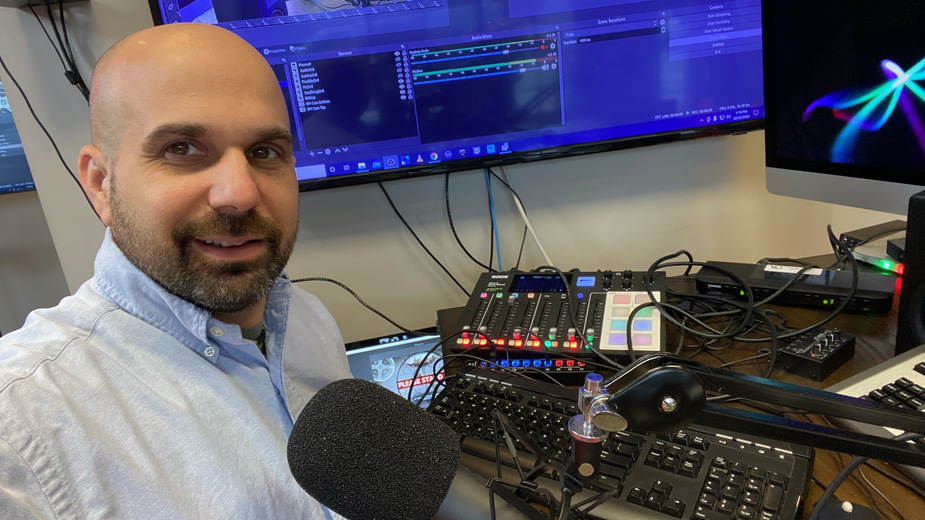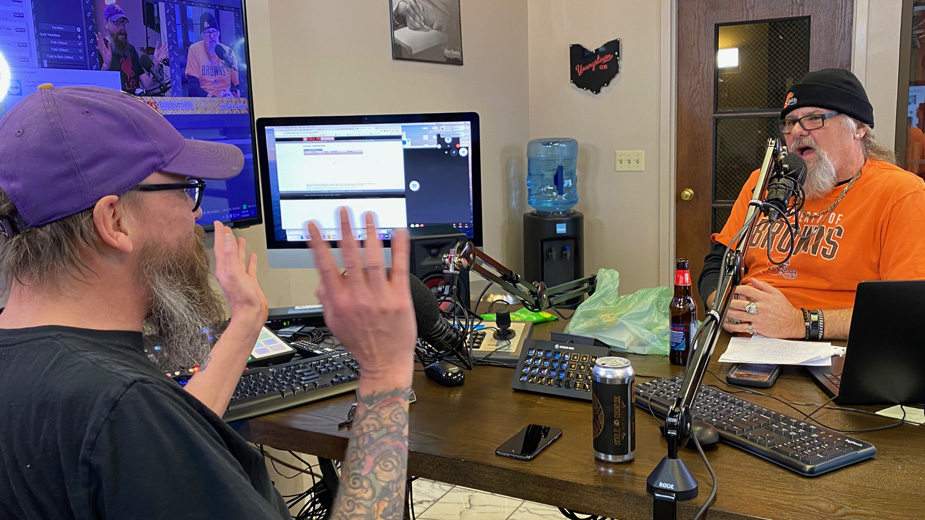YOUNGSTOWN, Ohio – For all the trials and tribulations that 2020 brought, it may end up being the year that charted a new course for local media, here in the Mahoning Valley and across the country.
Shutdowns in the spring forced news outlets to reimagine their operations, for both revenue models and their workflows. And over the course of the year – a news year like no other, with the coronavirus pandemic, protests over racial injustice and a presidential election topping the headlines – local news organizations proved their worth.
“Essential workers first and foremost means our frontline health care workers. But 2020 really showed how essential quality journalists are in their communities. Equally important, communities recognized how important good and accurate information is,” says Frank Mungeam, chief innovation officer of the Local Media Association.
“Think about all the information we got about COVID-19,” he continues. “For people who aren’t journalists, 2020 was rediscovery of the value of good journalism practices: fact-checking, objectivity and getting good information to people where and when they needed it.”
Mahoning Matters, born out of the closing of The Vindicator, adopted those tenets as its core mission when it began publication in October 2019. Part of McClatchy’s Compass Experiment, and funded by Google, the newsroom is an effort to develop models for sustainability and best practices that can be shared across the industry. But with just two full-time reporters, the arrival of the pandemic forced Mahoning Matters to examine its purpose and operations just five months into its existence.
After conducting market research and hosting meetings with would-be readers in the summer before its launch, the online news outlet turned its attention to accountability reporting, general manager Mandy Jenkins says, a focus that shifted somewhat because of the pandemic.
“Our mission didn’t change. But our pace and workflow and even some of our story choices changed. There was constantly new information and new regulations,” she says. “We had to tell people what that meant and how it affected this business and that business. We were trying to keep up with that and inform people of the changes.”
Among its methods for delivering news is through its e-newsletters – Your Morning Matters and Daily Afternoon Headlines – which include links to works published by other local news organizations.
“We got a great response to it. But we also like that it sends thousands of pageviews to other media outlets. It sends a message to readers that we know we can’t do everything and we know everyone has a piece in providing you the news,” Jenkins says.
As newsrooms shrink and shutter across the country, the sharing of resources is key to the future of local media organizations, the Local Media Association’s Mungeam says. It could be through linking to stories by other outlets or by working with them directly to produce work. And in a year where many media organizations faced a reckoning over diversity, such partnerships can also lead outlets to better coverage of the communities they serve.
“[Collaboratives] get at the issue of … reflecting on what we as a newsroom are good at and what are the blind spots. One of the best ways to improve your field of view is to partner and collaborate with diverse newsrooms in your community,” Mungeam says. “When you look at the information landscape in 2020 and beyond, if you’re in a local newsroom, your competitor anymore isn’t the newsroom down the road. It’s Hulu and Amazon Prime and all the other things that demand time and attention.”
At The Compass Experiment’s second site, The Longmont Leader in Longmont, Colo., the outlet is part of a statewide collaboration that allows newsrooms to share content through a central database. Newsrooms can simply log in to upload their stories or download others from colleagues across Colorado.
“I’d love to see something like that in Ohio. We’re all working hard and struggling and doing more with less,” Jenkins says. “It’s something that would drive more collaboration, not just regionally or in the Mahoning Valley, but even statewide.”
In 2020, local news media stood out in how they presented information, Jenkins and Mungeam say. Mahoning Matters has worked on “explainer journalism” – providing context to news and telling readers how it may affect them.
The same is true for other local news platforms.
At Youngstown Studios, a video and podcast production company, founder Joe Danyi has tapped into established hosts – including popular personality Fast Freddie [Fred Woak}, who lost his show at iHeart resulting from a pre-pandemic restructuring. To expand content offerings, Danyi is also working with people who have expertise in niche areas.

“Talk radio gave me the idea of bringing in experts who could talk about their craft,” Danyi says. “They may not have a stellar personality on any of the mediums. But they’re so knowledgeable that I’d find myself listening to things that I wouldn’t have otherwise. I don’t know anything about cars. But listening to ‘Car Talk’ [on NPR] was impressive.”
Giving voice to those experts can connect them to a global stage. The trick, Danyi continues, is tapping into search engine algorithms and ensuring the content is good. With the podcast market diluted – nearly anyone with a microphone and a recording device can publish one – niche markets separate the wheat from the chaff.
“If there’s a niche there and there’s the personality to carry the program, I don’t think it’s necessary any more to have more than a simple webcam and a mic that sounds decent, as long as the words have relevance and people are interested in listening to it,” Danyi says. “As we’re doing this, we’re finding that the algorithms are smarter than us and they’re doing a good job of serving us up to people who are looking for what we’re talking about in our content.”
The podcasting industry – nearing two million unique shows, half of which are active, on Apple Podcasts alone – is a growing, lucrative field. Grandview Research puts the size of its market at $11 billion this year, which projects that number to rise to $60 billion in 2027. Getting a piece of that revenue stream, Danyi says, will require looking at new methods of advertising and generating revenue.
“If we’re crafting our content for the next generation, they buy differently. They don’t hear an ad for a hamburger and then go to the restaurant,” he says. “It happens through influencers and people they trust talking about a product in a way that drives them to research it as an option. That model is what we have to take better control of.”
Creating new revenue models to ensure media organizations are more stable is one of the Local Media Association’s top concerns, Mungeam says. In September, the association launched the LMA Lab for Journalism Funding, convening 16 publishers for a six-month project funded by the Google News Initiative to examine how newsrooms could work with philanthropic organizations to fund the news.
The premise is to align newsrooms with the needs of the community, looping in foundations and the community to determine newsworthy stories – local government accountability, homelessness and education, for example – and to build a “feedback loop,” as Mungeam calls it, of reporting.
“Informed communities are healthier communities. News deserts are bad for civic health. Where we’re finding the best opportunities for synergy are on community problems that people recognize as mattering to them, that local funders care about addressing and that a leading local newsroom is positioned to report on,” he says.
Such models have been proven in parts of the country. The Seattle Times has four verticals of community reporting funded entirely by philanthropies, while The Fresno Bee has 30% of its entire newsroom funded.
There’s also the supporter model, which Mahoning Matters is trying. While all stories on the outlet’s site are free to access, the organization asks readers to contribute what they can to support the journalism its reporters do. Jenkins likens the method more to a fund drive as done by public radio stations than a traditional newspaper subscription.
“A newspaper subscription is paying to get access to the information. This isn’t about access,” she says. “It’s more about asking, ‘Do you care about the work we’re doing here? If so, here’s how it’s funded.’ ”
With everything that’s happened in 2020 and the disruptions that came with it, the year has served as a testing ground for new methods in media that could become future best practices, whether they be in how news is generated, funded or delivered, Mungeam says.
But the biggest question remains one of trust and 2020 has shown that trust can take many forms.
“There is a big question that lays over all these questions like a heavy blanket: trust in local news, or even news in general. Right now, local news remains the most trusted. We can do all kinds of creative transformation. We can innovate. We can develop data relationships,” Mungeam says.
“But if we don’t have audience trust, we probably don’t have a business model and our journalism doesn’t have an impact.”
Pictured: Radio personalities Viking Jim and Fast Freddie joined Youngstown Studios in 2020 after losing their radio shows at local iHeart radio stations. Above, they record in the new Youngstown Studios.
